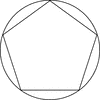 |
| A bronze statue of Valkas |
Symbols & Depiction: Symbols include the eagle Kuros, often seen clutching bolts of lightning in its talons; the Solkar, a pentagon in a circle; and the Trishulion, Valkas' trident-like staff of power. He is depicted as an aged warrior, stern and unyielding, but subject to occasional whims.
Prestige: The Empire of Tyrhennea holds Valkas to be chief of the among the gods. It was he who subdued the titans, the dragons, and the abominations of the Elder World, and he who decreed or divined the natural laws of the cosmos. His bride, Yuna embodies the harmony of family, society, and the World. Alcidine is either his earthly son or his very avater. Taranis and Valkarrea, primarily patrons of craft and wisdom, also go forth in warrior aspects to enforce the Lawgiver's will. Even his brother Grivenar serves as adviser and seer to the Skyfather's court.
Among the Vagyar, his prestige is much diminished. Although recognized as the Skyfather and conqueror of monsters, his veneration is eclipsed by that of his children and his brother.
 |
| The Solkar |
In Tyrhennea, the Law for which Valkas stands is built upon a foundation of loyalty to one's society, community, and family. Personal integrity and self-sacrifice and seen as great virtues, and misfortune is frequently attributed to transgressions of cosmic law. Sacrifices and penance may placate the Lawgiver, but Yuna is often beseeched to intercede for mercy. In the Delian cities, it is widely recognized that Valkas has a soft spot for those who can impress him with their daring and panache. "If you cannot be meek, be astonishing," as one Delian proverb puts it, "and the gods may smile on you yet."
Legends: There are two main cycles of legends about Valkas. The first is focused on his exploits at the dawn of time, slaying or subduing the monsters of the Elder World and ordering the cosmos according to Law. The second normally centers around a mortal who transgresses against the cosmic Law, and either suffers some terrible fate or serves as the god's champion on one or another epic quest. Valkas acts as little more than a judge or patron in these latter tales.
Artifact - Thunderheads: Valkas is occasionally depicted shooting thunderbolts from his bow, either to warn or to slay those who have offended his judgement. It is said that the arrows that channel this sky-fire are burnt to cinders, but that the arrowheads may sometimes survive. Treasure-hunters have been known to scour the sites of lightning strikes in hopes of finding such relics.

I'm really enjoying these Legend write ups. They have an awesome Norse/Germanic vibe to them (or is that just me?). Looking forward to more.
ReplyDeleteI'm a little confused about the family tree here. Grivenar is his brother?
ReplyDelete@pozatronic: glad you're enjoying 'em. I'm definitely drawing on Anglo-Saxon legends (which are in many cases early forms of the more familiar Norse legends), but I also try to tap into Russian folklore, Greco-Roman mythology, and so forth. Some of these other influences may become more obvious as the series continues.
ReplyDelete@Kyle: Yes, Grivenar and Valkas are reportedly brothers. And Zagyg is supposedly Grivenar's son, or something. Of course, in real life these familial connections are often retcons attached to popular legendary figures, in an attempt to unify unrelated myth-cycles into a larger cultural mythos. So maybe this is just what mortals claim, and the real deities are unrelated entities from vastly different dimensional planes. Or not.